Pedestrian routing
Overview
Pedestrian routing refers to the process of finding the best route for a pedestrian to travel from one location to another, taking into account factors such as pedestrian-only areas, sidewalks, crosswalks, and pedestrian-friendly intersections. It may also consider other factors such as stairs, which may be useful for wheelchair accessibility. OsmAnd always uses elevation data when calculating the estimated time of arrival (time to cover the distance) according to Naismith's rule.
To configure Pedestrian routing go to the Route parameters section of the Navigation settings.
Route Parameters - Walking
Pedestrian routing can be useful not only in urban areas, where pedestrians may encounter various obstacles when trying to get from one place to another. You can also use this routing type while jogging, hiking, and Nordic walking outside the city or in the mountains. Simply adjust routing parameters according to your needs.
- Android
- iOS
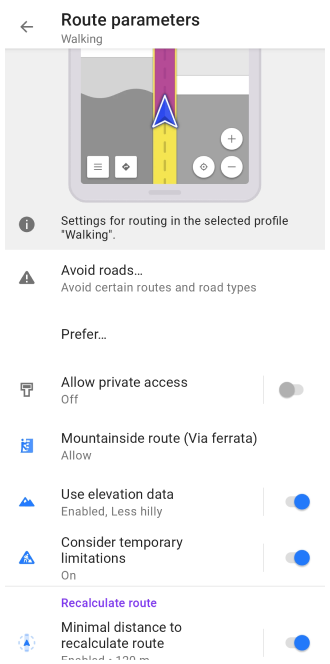
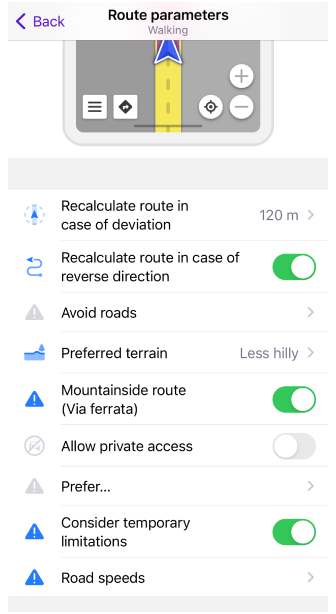
| Parameter | Description | Note |
|---|---|---|
| Avoid roads… | Select roads you want to avoid during navigation. You can either select a road on the map or choose road types from the list.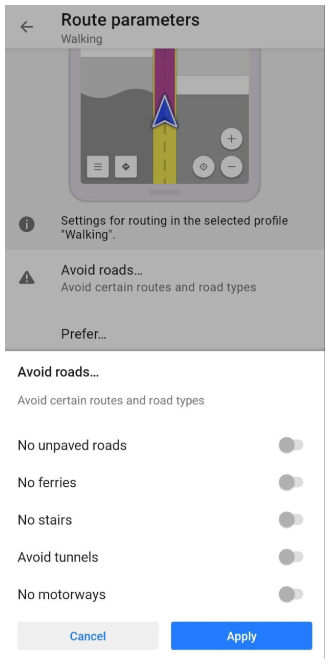 |
|
| Prefer… | You can choose what type of surface to prefer when building a route.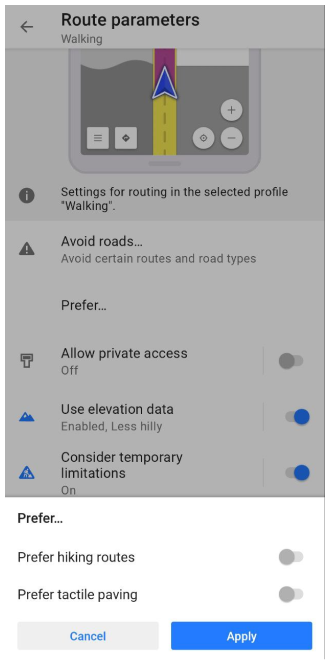 | You can choose between two options:
|
| Allow private access | Private access restrictions will be ignored when route calculating. | Tag private is used in OSM to describe restrictions on the use of highways and other transportation routes, as well as buildings, entrances, amenities, and leisure entities. |
| Use elevation data | Elevation data will be used in route calculation: penalties will be set for roads that differ from the selected type.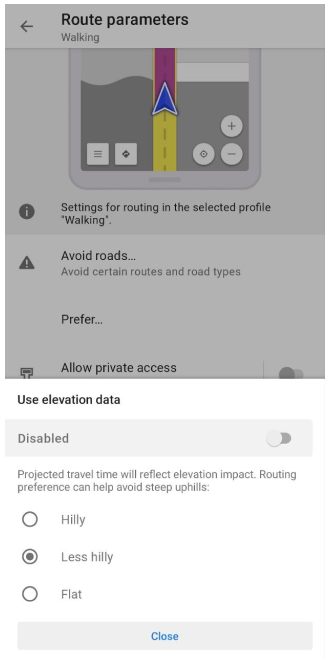 | This preference can help avoid steep hills or vice versa, prefer them. Using this option may be very helpful in pedestrian routing. Without elevation data the fastest route as on plain terrain will be calculated. |
| Mountainside route (Via ferrata) | Via ferrata routes will be used for routing when this option together with Use elevation data enabled. | Via ferrata is a mountain route equipped with fixed cables, stemples, ladders, and bridges. |
Other Routing Settings
-
The routing algorithm can also consider temporary limitations specified in OpenStreetMap. This can be done using Consider temporary limitations option. Note that in some cases, information from OSM can be outdated.
-
In the Recalculate route section of the Route parameters, you can enable and adjust route recalculation options.
-
In the Development section of the Route parameters, you can try new routing features that are currently in the testing phase. Note, that these settings are only available when the OsmAnd development plugin is enabled.
-
Road speeds setting in the iOS version of OsmAnd is located in Navigation settings → Route parameters (for Android, in Vehicle parameters → Default speed). This setting is used on unknown roads without speed limits. This is most often the case when navigating a track or online route. It must be set according to the parameters of your vehicle.
-
Vehicle parameters. Properly configuring the settings will help you avoid problems when creating a route. You can select the most appropriate route depending on the type of vehicle and road restrictions, as well as calculate the travel time.
Last updated: June 2024